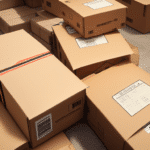Assessing and Planning for Maximum Efficiency
Before implementing strategies to enhance your carrier facility's efficiency, it is crucial to conduct a comprehensive evaluation of current operations. This assessment should encompass your facility's capacity, equipment, workforce, and inventory management practices. By analyzing these factors, you can pinpoint areas that require improvement and develop a strategic roadmap to address them effectively.
Comprehensive Facility Assessment
Begin by reviewing your facility's overall capacity and identifying any bottlenecks that may hinder productivity. Assess the condition and efficiency of your equipment, ensuring that machinery is up-to-date and functioning optimally. Additionally, evaluate workforce performance and inventory management practices to identify inefficiencies.
Evaluating Automation and Sustainability Practices
Automation can significantly streamline operations, reduce errors, and boost productivity. However, it's essential to weigh the initial investment against long-term benefits. According to a McKinsey report, automation can increase productivity by up to 30% in logistics operations.
Moreover, sustainability practices are becoming increasingly important. Assess your facility's energy consumption, waste management, and transportation methods. Implementing sustainable practices not only reduces costs but also enhances your facility's reputation. For more on sustainable logistics, refer to the Energy Star guidelines.
Optimizing Facility Layout and Operations
The physical layout of your carrier facility plays a pivotal role in operational efficiency. A well-organized layout minimizes unnecessary movement, reduces travel time, and enhances workflow.
Implementing Lean Layout Principles
Adopting a lean layout involves organizing inventory for quick retrieval and streamlining workflows for loading and unloading operations. This approach reduces waste and ensures that processes flow smoothly. Regularly reviewing and adjusting the layout can help maintain optimal efficiency.
Enhancing Workplace Safety
Safety is paramount in any facility. Design your layout to include clear and safe pathways for workers, minimizing the risk of accidents. Implement safety measures such as designated walkways, adequate lighting, and clear signage. Regular safety training and the provision of necessary equipment are essential to maintain a safe working environment.
Leveraging Technology for Enhanced Efficiency
Integrating advanced technology solutions can revolutionize your carrier facility's operations, leading to increased efficiency and productivity.
Advanced Sorting and Tracking Systems
Investing in automated sorting and tracking systems can streamline operations and reduce human error. Technologies like RFID and barcode scanning facilitate accurate inventory tracking and improve overall workflow.
Real-Time Tracking for Improved Customer Satisfaction
Implementing real-time tracking technologies, such as GPS and IoT devices, allows customers to receive up-to-date information on their shipments. This transparency enhances customer satisfaction and reduces the volume of inquiries handled by customer service teams. According to a survey by Forbes, real-time tracking can improve customer satisfaction scores by up to 15%.
Enhancing Safety and Security with Technology
Technology also plays a vital role in enhancing safety and security within your facility. Implementing video surveillance systems and access control technologies can prevent theft, unauthorized access, and damage to shipments. Additionally, vehicle safety technologies such as collision avoidance systems and driver monitoring can reduce the risk of accidents on the road.
Enhancing Employee Training and Development
Your workforce is a critical component of your carrier facility's success. Comprehensive training programs can significantly impact operational efficiency and employee satisfaction.
Comprehensive Training Programs
Provide your employees with thorough training in areas such as safety protocols, skills development, and productivity enhancement. Well-trained employees are more competent, make fewer errors, and contribute to a more efficient workflow.
Employee Retention through Development
Offering ongoing training and development opportunities helps employees stay current with new technologies and best practices. This not only improves performance but also increases job satisfaction and retention rates. According to the Society for Human Resource Management, investing in employee development can reduce turnover rates by up to 25%.
Effective Inventory and Freight Management
Efficient inventory and freight management are essential for maintaining smooth operations and reducing costs in your carrier facility.
Best Practices for Inventory Management
Accurately tracking inventory levels and implementing efficient retrieval systems are fundamental. Utilize inventory management software to monitor stock levels in real-time, reducing the likelihood of overstocking or stockouts. Prioritize items based on demand and frequency of use to optimize storage space.
Regularly review and update your inventory management system to align with evolving facility and customer needs. Training staff on proper inventory procedures ensures consistency and accuracy, minimizing errors and enhancing overall efficiency.
Reducing Freight Transportation Costs
Freight transportation is a significant expense for carrier facilities. Implementing strategies such as route optimization, load consolidation, and modal shifts can lead to substantial cost savings. Technologies like Transportation Management Systems (TMS) can automate load planning and carrier selection, further reducing expenses. According to a report by Transport Topics, effective freight management can lower transportation costs by up to 20%.
Implementing Sustainable Practices
Adopting sustainable practices not only benefits the environment but also enhances your facility's efficiency and reputation.
Energy-Efficient Solutions
Implement energy-efficient lighting, heating, and cooling systems to reduce energy consumption and lower operational costs. Utilizing renewable energy sources, such as solar panels, can further decrease your facility's carbon footprint.
Sustainable Transportation Options
Transitioning to electric or hybrid vehicles can significantly reduce fuel costs and emissions. Additionally, optimizing transportation routes to minimize mileage contributes to both environmental sustainability and cost savings. For more information on sustainable transportation, refer to the EPA's guidelines on electric vehicles.
Measuring Performance and Continuous Improvement
Regularly measuring performance and fostering a culture of continuous improvement are essential for maintaining and enhancing efficiency in your carrier facility.
Key Performance Indicators (KPIs)
Track and analyze KPIs such as on-time delivery rates, transit times, labor productivity, and inventory accuracy. Monitoring these metrics allows you to identify trends, pinpoint inefficiencies, and implement targeted improvements. Utilizing dashboards and analytics tools can facilitate real-time KPI tracking and reporting.
Building a Culture of Continuous Improvement
Encourage ongoing employee training and regular process reviews to identify areas for improvement. Setting clear goals and incentivizing productivity fosters an environment where employees are motivated to contribute to the facility's efficiency. Implementing methodologies like Lean and Six Sigma can provide structured approaches to continuous improvement.
Overcoming Common Challenges
Carrier facilities often face challenges such as space constraints, traffic congestion, and intense competition. Developing strategic solutions, whether through operational adjustments or technological innovations, is crucial for overcoming these obstacles. For example, adopting space-saving storage solutions can maximize available warehouse space, while advanced scheduling software can alleviate traffic-related delays.
Embracing Future Trends and Innovations
The carrier industry is rapidly evolving with advancements in automation, electric vehicles, and drone deliveries. Staying informed about emerging technologies and being willing to adopt innovative solutions can keep your facility competitive and efficient. According to Forbes, embracing these trends is essential for future-proofing your operations.
Maximizing efficiency in your carrier facility requires a multifaceted approach that includes thorough assessments, strategic layout optimization, technology integration, employee development, effective inventory and freight management, sustainable practices, and continuous performance measurement. By implementing these strategies, you can enhance operational processes, reduce costs, and drive profitability, ensuring that your carrier facility remains competitive in an ever-evolving industry.




















